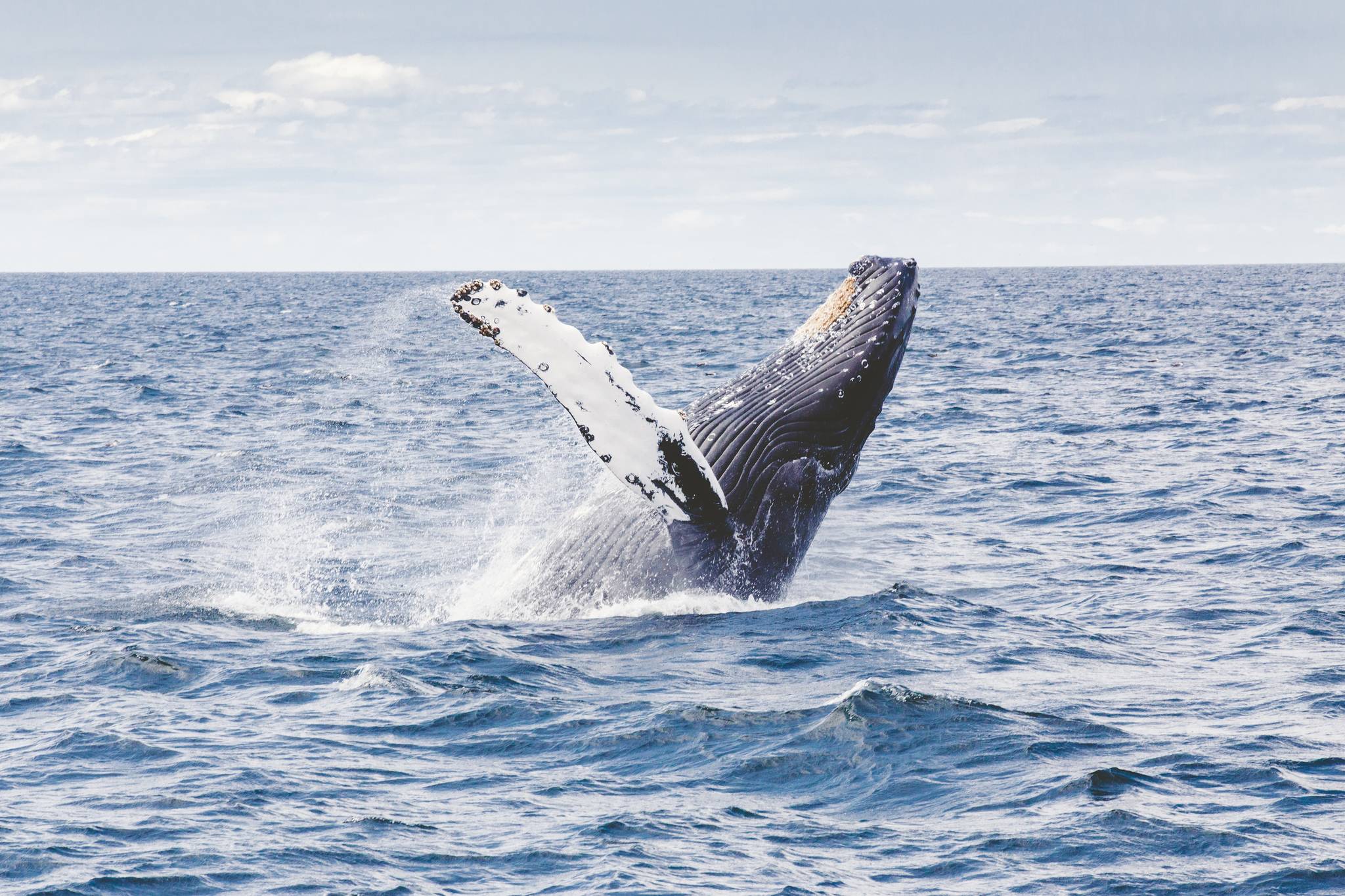Four whales were struck by vessels this year in Southeast Alaska, slightly less than average of 5.125 per year, according to NOAA’s National Marine Fisheries Service.
Southeast Alaska averages slightly more than five documented whale strikes a year, all falling in the summer months before the whales migrate south, according to data provided by Julie Speegle, public affairs officer for NOAA Fisheries-Alaska Region. A whale strike is when a vessel strikes a whale, intentionally or not. Alaska has had six total whale strikes this year.
There have been 41 strikes since NOAA began collating data by year in 2012, and the highest numbers fall in July and August.
“Most vessels that strike whales are less than 49 feet long. Most collisions occur at speed over 13 knots (15 mph),” Speegle said in an email. “Calves and juveniles appear to be at higher risk of collisions than adult whales.”
[Are whales affected by boat boom?]
According to the data, almost all whales struck are Megaptera novaeangliae, known colloquially as humpback whales. Data about whale strikes get to NOAA through a variety of channels, including the general public, the marine mammal community, commercial operators and agencies such as the U.S. Coast Guard and the Alaska Department of Fish and Game.
Accordingly, Speegle said, there are a number of regulations for observing whales to preserve their safety, codified in NOAA’s humpback whale approach regulations, put in place in July 2001. Those include maintaining a 100-yard buffer between the vessel and the whale, not to stray into their path, and to maintain a slow, safe speed around the whale.
“First, it is important to be aware when there are whales in the area and know that the most effective means of reducing the risk of shipstrike is reducing vessel speeds,” Speegle said. “Second, it is important for people to know that whales don’t always know where boats are and are not always in a position to avoid boats.”
[Fewer whales winding up entangled in Hawaii debris]
In the event of a whale strike, Speegle said, NOAA investigates to determine if there was negligence at the hand of the operator. Speegle said she could not talk about the four vessels that struck the whales so far this year, as the investigations are still ongoing.
“If it was found that they were negligent, there is the potential for a case to be made against them as a ‘take’ under the Marine Mammal Protection Act and/or Endangered Species Act,” she said.
The penalties for violating these can be as high as $100,000 for an individual and $200,000 for an organization, in addition to possible prison time. If someone is involved in or is witness to a whale strike, they should get in touch with NOAA immediately, Speegle said.
“Anyone who is out on the water and either witnesses or is involved in a vessel collision with a whale should contact NOAA Fisheries,” Speegle said. “The easiest way to do this is by calling the Alaska Marine Mammal Stranding Hotline (1-877-925-7773), where reports are passed immediately to NOAA Fisheries Stranding Personnel, or by calling our Protected Resources Division directly at 907-586-7235.”
• Contact reporter Michael S. Lockett at 757-621-1197 or mlockett@juneauempire.com.

